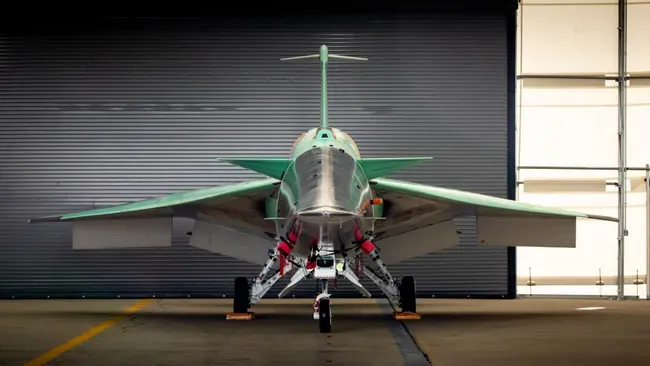Nasa
NASA develops supersonic plane that flies at 1.4 times the speed of sound and is 1000 times quieter
Recently, NASA announced new advances in the development of the X-59 supersonic aircraft, which is part of its Quesst mission. The objective of this mission is to revolutionize supersonic flights, making them quieter and, therefore, viable for commercial use on land routes.
The X-59 promises to fly at an impressive 1.4 times the speed of sound, which corresponds to around 925 miles per hour (1500 km/h). Additionally, the plane is designed to be 1000 times quieter than current supersonic aircraft, reducing the annoyance of sonic booms.

The X-59 is a centerpiece in NASA's strategy to provide data that helps regulators reconsider bans on commercial supersonic flights over land areas. For more than 50 years, these flights have been banned in the United States and several other nations due to the negative impact of sonic booms on communities. However, with the promise of a much softer “sonic thud,” the X-59 could open a new path to supersonic aviation.
Currently, commercial flights are extremely fast compared to the past. If we look back to the 1950s and 1960s, traveling from England to Australia could take almost a week. Today, this trip can be done in less than a day. However, in recent decades, advancement in the speed of commercial aircraft has stagnated, mainly due to the problem of sonic booms.
When an aircraft exceeds the speed of sound, it creates shock waves that result in a sonic boom. These rumbles are more than just annoying noises. They can cause damage to buildings, break windows and even disturb wildlife. To avoid these problems, the United States Federal Aviation Administration (FAA) has imposed strict rules that restrict supersonic flights over land areas.
As a result, commercial supersonic flights are limited to routes over the ocean, where booms do not affect inhabited areas. However, with the success of the X-59, this reality could change, allowing supersonic flights to operate freely over land, transforming the future of aviation.
NASA's Quesst mission aims to demonstrate the feasibility of silent supersonic flight. NASA partner Lockheed Martin unveiled the X-59's innovative design in January 2024. The plane features a long, narrow fuselage, an elongated nose and wings designed to minimize shockwave fusion, avoiding the typical sonic boom .
Instead of a bang, the X-59 should produce a sound similar to a distant thud, compared to the sound of a car door slamming. This new “sonic thud” has the potential to change perceptions and regulations about supersonic flight.
Bob Pearce, associate administrator for aeronautical research at NASA, highlighted the importance of this mission: “NASA will share the data and technology we generate from this unique mission with regulators and industry. By demonstrating the possibility of silent commercial supersonic travel over land, we seek to open new commercial markets for U.S. companies and benefit travelers around the world.”
At 30 meters long and with a wingspan of 9 meters, the X-59's design incorporates technological innovations that will enable silent supersonic flight. The plane's conical nose, responsible for almost a third of its length, has the function of breaking shock waves, preventing sonic boom.
Another innovative aspect of the X-59 is the absence of a front window in the cockpit. Instead, pilots will rely on the eXternal Vision System, which uses high-resolution cameras to transmit images to a 4K monitor inside the cockpit. This allows a clear view of the outside, even without the traditional front window.